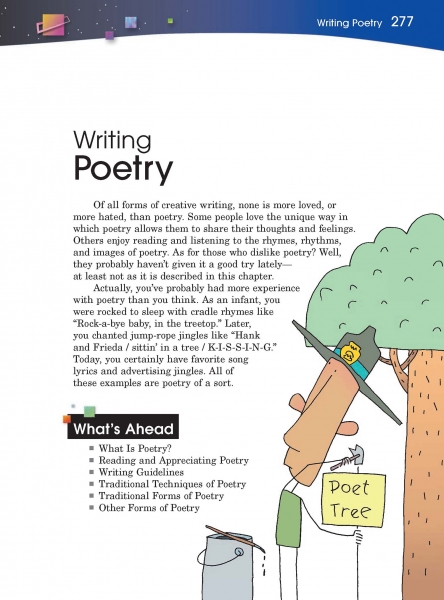Page 277 from

Start-Up Activity
Have students write down lyrics from their favorite song. Then display some of them for discussion. Ask students to comment on the ideas, organization, voice, and word choice used in the lyrics. (Possible responses: love is a common theme; they contain repetition; they use common words; they rhyme; they're easy to follow; etc.)
Next, read and discuss the chapter introduction. During your discussion, refer to the lyrics that your students chose, which are, in fact, poetic expressions. Ask students if they can think of any other examples of poetry in their lives, including advertising jingles. (Here’s an example from Alka-Seltzer: “Plop, plop, fizz, fizz, oh what a relief it is.”) Point out that the information in this chapter should help students gain an appreciation for poetry.
Think About It
“You will not find poetry anywhere unless you bring some of it with you.”
—Joseph Joubert

